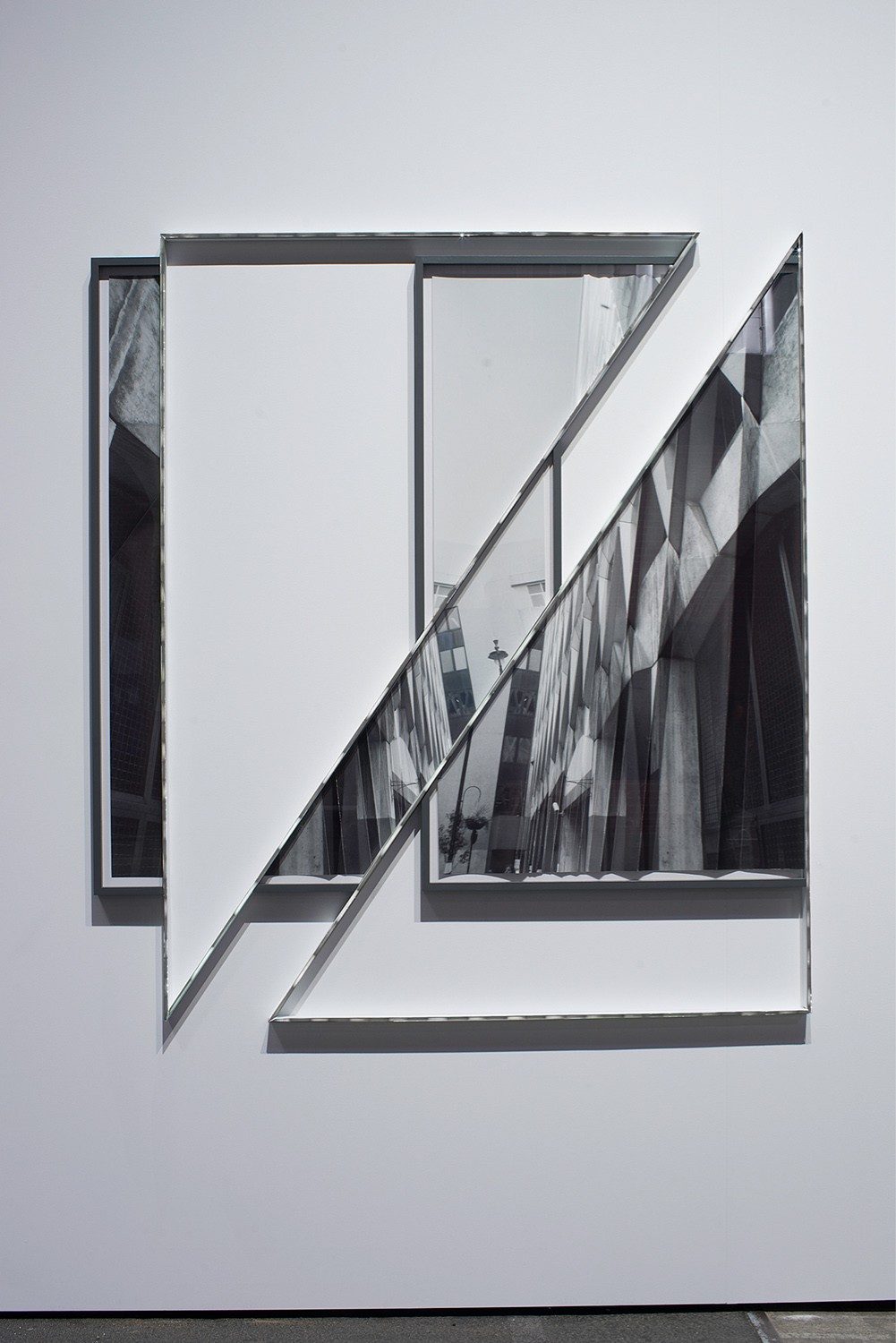

The recurring fold
Sinta Werner applies a Baroque device to modern architecture
The reduplication of physical reality through illusory space or mirrors is a recognised feature of baroque art and architecture. What that period and Werner’s work have in common is a permanent questioning of the boundary between image and space, between the two- and the three-dimensional. The room, or space is not the uniform box with straight sides on which Alberti based his perspective construction, but reappears through a literally multifaceted series of contortions or folds. Tellingly, the French philosopher Gilles Deleuze said ‘the fold taken to infinity’ is the defining characteristic of the Baroque.
Not every epoch entertains this fondness for illusion, however. Ambiguous optical illusions were most rigorously fought in the functionalism of modern art: they were as great a breach of proper behaviour for the ideologists in the school of ‘form follows function’ as was ornament for Adolf Loos.
Today it has almost become the fashion to analyse the geometric rationalism of modernism through the artistic idiom. Its creative components are taken apart like a modular system and then put back together again. Sinta Werner’s ‘reflection’ of modern architecture follows a different path. Werner allows duplication and illusion to crop up like recurring ghosts in places where rigidly even, grid-like patterns would seem to have removed any room for the manoeuvre of unfolding.
Her point of departure is always a typically ‘modern’ construction that is based on the regular repetition of modules. In Überschreibung des Himmels (Overwriting canopy) the subject is a single apartment building in London, which is covered in scaffolding and wrapped in building plans. Wind presses the plans against the scaffolding so that the structure shows through. Following this bony outline, Werner has folded the photograph at regular intervals, even extending the pleats outwards to the edge of the picture. Then she has re-photographed the folded image: subsequently, just four folds are made in the paper. The other folds are there merely by dint of ‘replication’.
What we are looking at is thus not a real building in a real space but a paradoxical entanglement of physical reality and artistic illusion. Another work moves this refined play on duplication and the interlacing of several levels and spaces to another plane. Dekodierung der reflektierten Oberflächlichkeit (Decoding reflected superficiality) takes the photograph of another London building – this time a car park – and folds it so that the paper is divided in the same regular shapes and following the same grid as the concrete facade of the subject. Werner has then photographed the photograph – which still bears the traces of folding – and subjected the result to further folding. Shadows appear that are not present on the real building but which are true enough on the paper. The effect of the double folding and photographic reproduction is vexing: depictions of the physical and spatial are drawn into a paradoxical spiral, rather like the ‘impossible’ surrealistic images created by René Magritte.
Werner achieves this interlocking of real and virtual space through manipulating her images in photoshop. Two triangular sections of wall covered in collage are selected with the polygonal lasso tool and horizontally reflected. The triangular shapes are references in themselves to the real-world architecture of the exhibition hall and its supporting structures. Their edges are picked out with a strip of LED lights suggesting a running, flashing strip – the selection tool – and making actual space appear to be an art work.
But is such ‘baroquisation’ of the rationality of modern grid architecture as paradoxical as it first seems? In the end everything is a question of perspective, in the truest sense of the phrase. For even a regular geometrical structure, when placed at an angle in a picture like Werner’s car park frontage, forms its own dizzying vanishing lines. To draw out the potential of these lines – to unfold their baroque vitality, we simply need Werner’s precise, artistic and intuitive hand.
Text: Ludwig Seyfarth